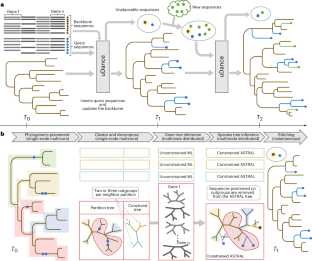2023-08-01 ノースカロライナ州立大学(NCState)
◆研究結果は、蛾の交尾行動とフェロモンの役割について新たな理解をもたらし、害虫管理や農業に役立つ可能性があります。
<関連情報>
- https://news.ncsu.edu/2023/08/male-moth-aphrodisiac-revealed/
- https://www.cell.com/current-biology/fulltext/S0960-9822(23)00917-X
蛾の求愛シグナルの内因性と植物由来のモザイク模様 A mosaic of endogenous and plant-derived courtship signals in moths
Yang Liu,Jeremy J. Heath,Sai Zhang,Michiel van Wijk,Guirong Wang,Jan Buellesbach,Ayako Wada-Katsumata,Astrid T. Groot,Coby Schal
Current Biology Published:August 01, 2023
DOI:https://doi.org/10.1016/j.cub.2023.07.010

Highlights
•The courtship pheromone of male Chloridea virescens moths was re-examined
•The pheromone constitutes a mosaic of type I, type II, and plant-derived compounds
•Methyl salicylate (MeSA) is an aphrodisiac that improves mating success
•Two olfactory receptors contribute to high olfactory sensitivity of females to MeSA
Summary
Insects rely on olfaction to guide a wide range of adaptive behaviors, including mate and food localization, mate choice, oviposition site selection, kin recognition, and predator avoidance.1 In nocturnal insects, such as moths2and cockroaches,3mate finding is stimulated predominantly by long-range species-specific sex pheromones, typically emitted by females. During courtship, at close range, males in most moth species emit a blend of pheromone compounds from an everted, often large, pheromone gland. While long-distance communication with sex pheromones has been remarkably well characterized in thousands of moth species,2,4close-range chemosensory sexual communication remains poorly understood. We reveal that in the moth Chloridea virescens, the male pheromone consists of three distinct classes of compounds: de novo biosynthesized alcohols, aldehydes, acetates, and carboxylic acids that resemble the female’s emissions; newly identified compounds that are unique to the male pheromone, such as aliphatic polyunsaturated hydrocarbons; and sequestered plant secondary compounds and hormone derivatives, including methyl salicylate (MeSA). Thus, males employ a mosaic pheromone blend of disparate origins that may serve multiple functions during courtship. We show that two olfactory receptors in female antennae are tuned to MeSA, which facilitates female acceptance of the male. Because MeSA is emitted by plants attacked by pathogens and herbivores,5the chemosensory system of female moths was likely already tuned to this plant volatile, and males appear to exploit the female’s preadapted sensory bias. Interestingly, while female moths (largely nocturnal) and butterflies (diurnal) diverged in their use of sensory modalities in sexual communication,6MeSA is used by males of both lineages.


